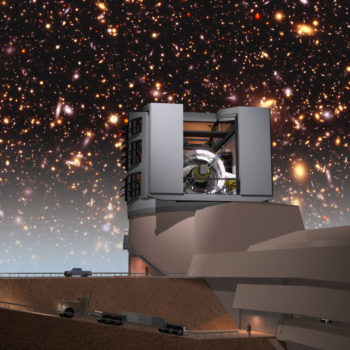
Artist’s illustration of asteroid ISRU showing astronauts at an asteroid as well as other mining and transportation vehicles operating in space.
Credit: TransAstra Corporation & Anthony Longman
An international team has taken a hard look at the potential existence and utilization of “minimoons.”
The minimoon source population, the set of objects from which minimoons are drawn, are Earth’s co-orbital asteroids.
Within a few years, they suggest, the Large Synoptic Survey Telescope (LSST) will either begin to regularly detect temporarily-captured orbiters (TCOs) — colloquially known as minimoons — or force a re-analysis of the creation and dynamical evolution of small asteroids in the inner solar system.

Minimoons (temporarily captured objects, TCOs) are gravitationally bound to the Earth-Moon system.
Credit: Paul Chodas (NASA/JPL)
There should be a steady state population of the minimoons, with about one 1- to 2-meters diameter captured objects at any time, with the number of captured meteoroids increasing exponentially for smaller sizes.
Robert Jedicke of the Institute for Astronomy, University of Hawai’i at Mānoa, Honolulu, Hawaii led the research, published in Fundamental Astronomy, a section of the journal Frontiers in Astronomy and Space Science.
Minimoon hypothesis
The major problem with the minimoon hypothesis is the small number of known objects that have ever been minimoons.
“There remain at least a few difficulties with establishing the reality of new minimoons: (1) overcoming a prejudice against their existence, (2) obtaining evidence that they have a natural provenance, and (3) establishing that they are not “merely” lunar fragments ejected from the Moon’s surface during an impact event,” Jedicke and his colleagues write.
“The first issue will eventually be resolved when so many minimoons have been discovered that it is impossible to maintain a prejudice against them or when a serious flaw is discovered in the dynamical models that predict their existence,” the research team reports.
Candidates for future missions
Minimoons will provide interesting science opportunities as a consequence of their small sizes and their relatively long capture duration.
While scientifically valuable, Earth’s minimoons have also entered the game as candidates for future space missions, the researchers suggest. “They have been delivered for free to cis-lunar space by the solar system’s gravitational dynamics and are now available in our own backyard under favorable energetic conditions which make them ideal targets.”

The Large Synoptic Survey Telescope (LSST) might regularly detect minimoons. A simulated night sky provides a background for the LSST facilities building on Cerro Pachón in this artist’s conception.
Credit: The LSST Corporation (LSSTC)
Technological and commercial opportunities
From a technological and commercial perspective minimoons provide an ideal opportunity for:
— the development and testing of planetary defense technologies (e.g., deflecting an asteroid;
— validating and improving close-proximity guidance, navigation, and control algorithms;
— testing close-proximity procedures and protocols for safe operation of crewed missions around asteroids; and
— establishing the feasibility of asteroid mining technologies for future commercial applications, all in an environment where the round-trip light-time delay is a few seconds.
“While naturally produced minimoons will be too small for commercially profitable enterprises they will be extremely useful for testing techniques in a cis-lunar environment before moving operations into distant heliocentric space,” the research team adds.
To view the research report — Earth’s Minimoons: Opportunities for Science and Technology – go to:
https://www.frontiersin.org/articles/10.3389/fspas.2018.00013/full


Reminds me of E.E. Doc Smith, The Lensman series, when Kinnison went undercover (in “Gray Lensman” I believe) as a drug addicted meteor miner.
Anyway, I have been banned from all the other popular space blogs because I am not a fan of NewSpace. Dr. Spudis has not been blogging much lately so perhaps Mr. David will allow me write something on his forum. Nobody else will let me say a thing about space.